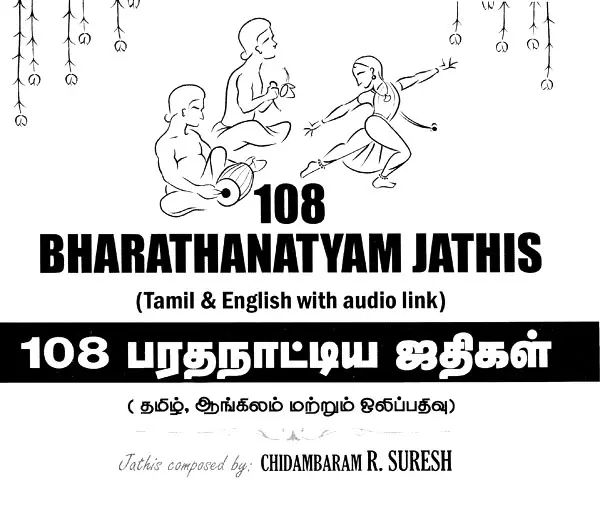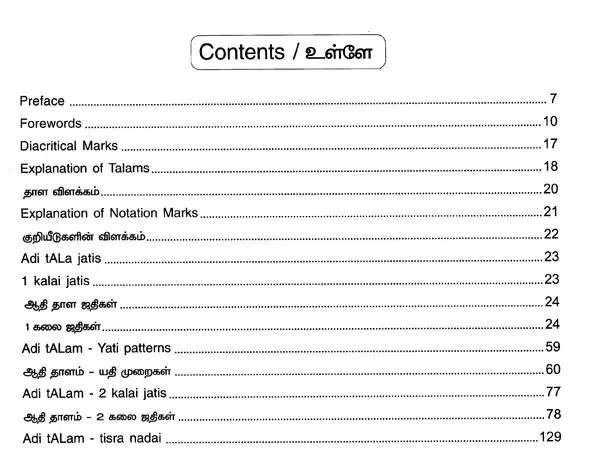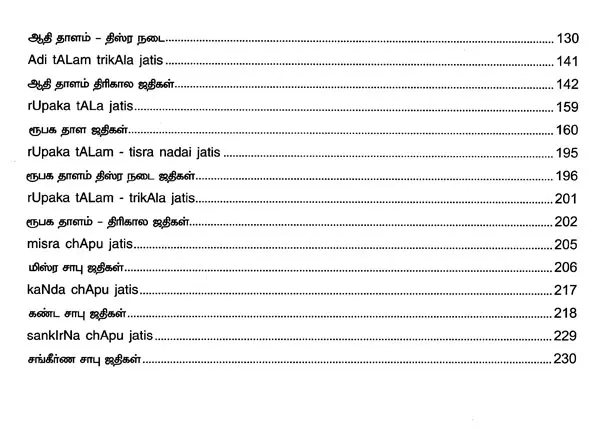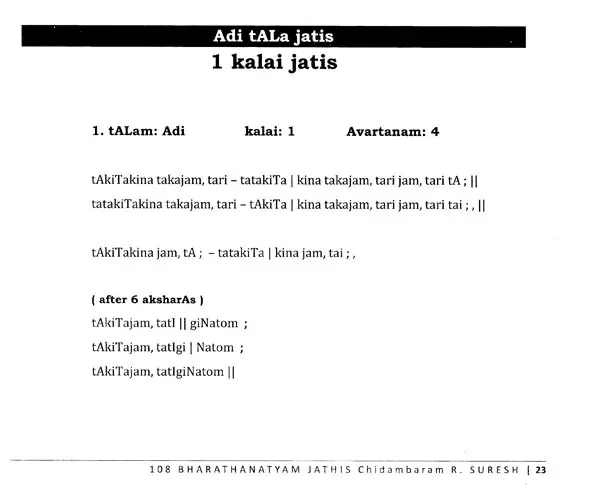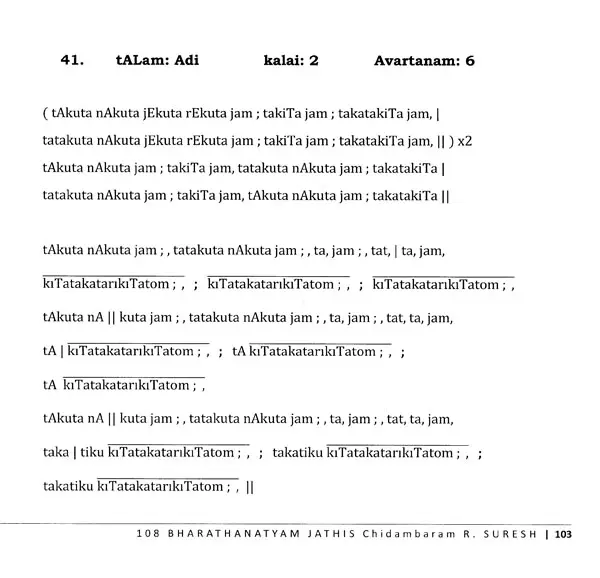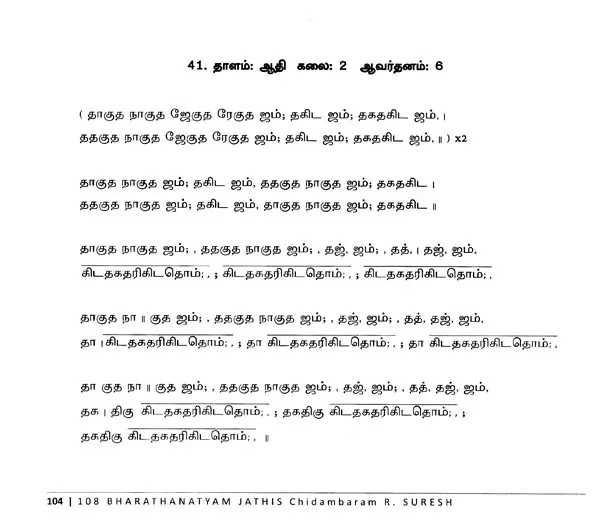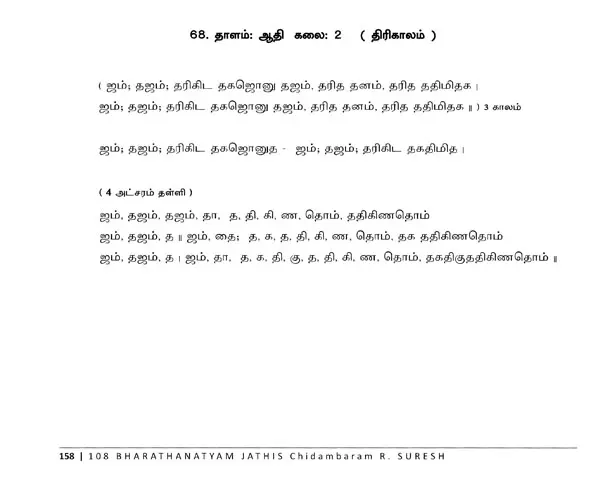
108 பரதநாட்டிய ஜதிகள்- 108 Bharathanatyam Jathis (Tamil and English With Audio Link)
Book Specification
| Item Code: | UAM657 |
| Author: | Chidambaram R. Suresh and Shobana Suresh |
| Publisher: | Samarpana Institute of Dance |
| Language: | English and Tamil |
| Edition: | 2022 |
| ISBN: | 9780645433906 |
| Pages: | 240 |
| Cover: | PAPERBACK |
| Other Details | 8.50 X 9.50 inch |
| Weight | 530 gm |
Book Description
Suresh, born and brought-up in Chidambaram, is a Bharathanatyam dancer, nattuvangam artist, and percussionist, now residing in Sydney Australia. He is the co-founder and teacher of Samarpana Institute of Dance, and dancer and choreographer for Agal Dance Company, Sydney. He began his dance tutelage under Dr. Uma Anand (daughter of K.N. Dhandayuthapani Pillai), and later under the guidance of Padmabhushan Prof. C.V. Chandrasekhar. Suresh holds a diploma in Bharathanatyam (Natyakalaimani) and Diploma in Nattuvangam (Nattuvanga Kalaimani) from Annamalai University. Suresh has accompanied various well-known dancers on the nattuvangam, including his guru Prof. C. V. Chandrasekhar. Suresh is a keen explorer of rhythm, and has composed various nritta based items for Bharathanatyam, including alarippus in different thalas, jathiswarams, pushpanjalis and thillanas. Suresh's career in Bharathanatyam as a teacher and choreographer has spanned over 17 years. Suresh has an innovative style of choreography that stays true to the traditional framework, while presenting novel ideas with an interplay of complex rhythm patterns. This book is the first to be authored by Suresh, consisting of 108 of his collection of jathis, and comes with a downloadable audio recording in his voice for the benefit of dancers and teachers.
I feel proud that I hail from the town of Chidambaram, the holy abode of Nataraja (the Lord of dance). Although I do not come from an artistically inclined family, I recall growing up in an atmosphere filled with the vibrations of the Natarajar temple, the choruses of Tamil Thevarams, Temple processions with Nadaswaram and Thavil, and of course Bharathanatyam.
Year after year, from since I was a little boy, I would watch the annual Natyanjali festival at the Thillai Natarajar Temple, where I was inspired by watching numerous stalwarts in Bharathanatyam. I was hoping and dreaming to one day indulge myself in this beautiful art form, that I knew little about. I did not have the opportunity to pursue lessons in Bharathanatyam as a child, but due to my life-long yearning to learn this art form, I enrolled myself in Diploma of Dance (Bharathanataym) at Annamalai University after my 12th standard. As I nervously joined the Music College on my first day, I had the great privilege of meeting my Guru, Kalaimamani Dr. Uma Anand, who first moulded my untrained body and quenched my thirst for knowledge over the coming years. She has not only been a Guru to me, but also a mentor and like a second mother.
During one of the Natyanjali festivals, I recall watching a performance by Padmabhushan Prof. C. V. Chandrasekhar sir and his daughter, Manjari akka, with Jaya Maami conducting the nattuvangam. I remember feeling mesmerised and inspired watching this artistic family on stage. Little did I know that I would come under his tutelage later.
Bharathanatyam is an ancient art of Tamilnadu. Tolkappiyam assigned to the 3rd century B.C. is a prime source of information regarding the Dance and Music of the ancient Tamils. Silappadikaram written in the Sangam period also contains information about dance. Dance was an art which served only entertainment purposes, later on with the growth of Temples, this art became a ritual. It grew and developed in the temple premises, Dancers and Nattuvanars who were employed in the temples were patronized by the kings and the temple authorities.
Thus, the art employed for entertainment attained spiritual nature. The temple dancers called Devadasis were coached by the Natyacharyas, who were experts in the art. They excelled in vocal music, Mridangam playing etc. Today those who boast themselves as Nattuvanars are only Taladaris.
Chidambaram R. Suresh is not from a traditional Nattuvanar family. I do not know how he developed an interest for Music and Dance. When I joined Annamalai University in the year 2000, I was informed about a boy who has joined Diploma course and was waiting to start dancing under my guidance. When I entered the classroom, I saw this slender, intelligent looking boy waiting to be taught from scratch. Very soon I realized that he had an unquenchable thirst for knowledge. He was equally interested in Mridangam and would attend those classes too.
After completing the four-year Diploma course in Dance and one-year Nattuvangam course, he underwent training from different gurus in Dance and Mridangam. His sound rhythmic sense enabled him to compose jatis while he was a student. He was good at singing too, thus fulfilling all the qualities required to make him a good Nattuvanar.
I am happy to note that this book of jatis composed by Suresh has 108 jatis which will be useful to dancers as well as teachers. These jatis conform to the traditional pattern.
My blessings and best wishes to Suresh and anticipate many more such works from him.
**Contents and Sample Pages**
